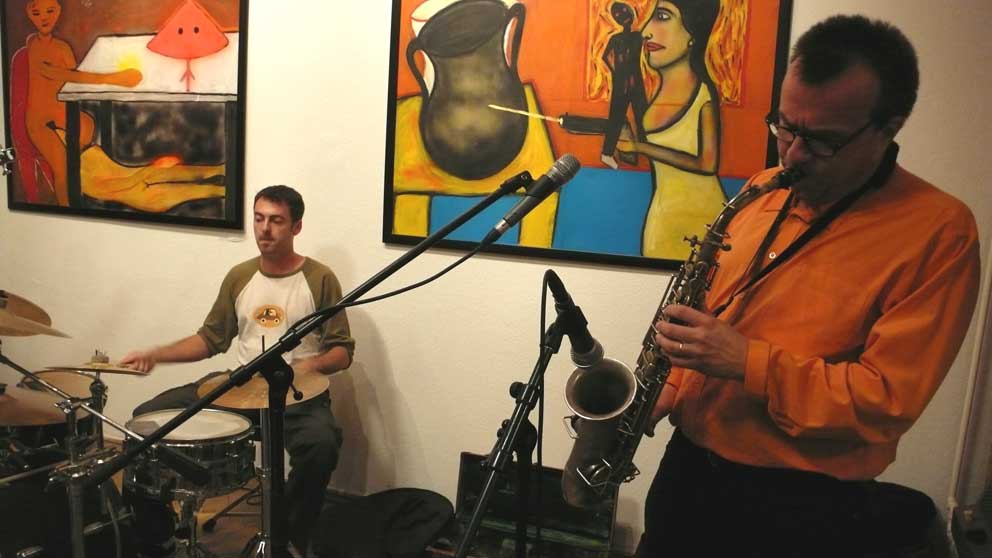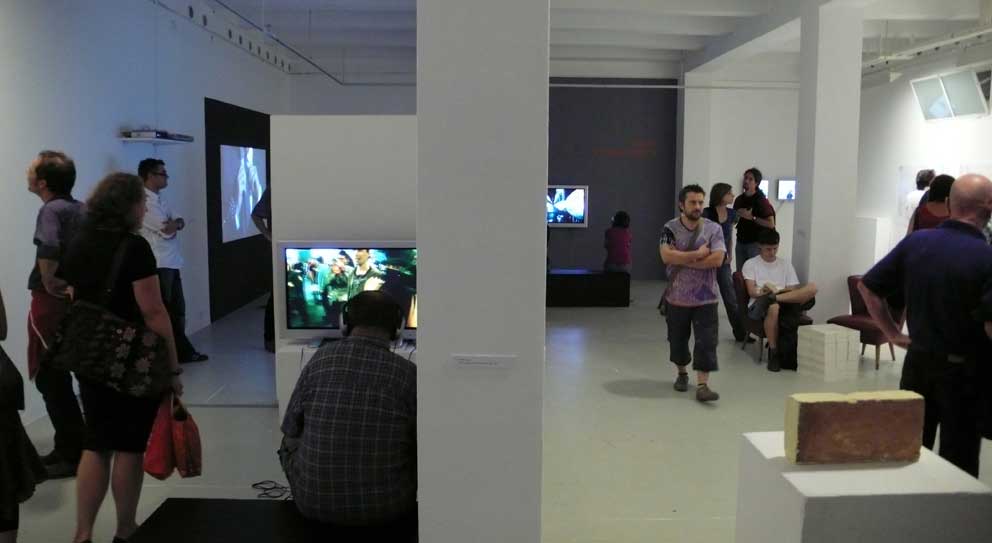B E V E Z E T Ő
Képzőművészeti kiadványt sokat láthatunk, főként egy-egy művészt vagy korszakot bemutató albumokat, és ezeknek nyilván alapvető szerepük van művészeti hagyományaink átörökítésében és a művészetekkel kapcsolatos tudásunk fejlesztésében. Ám művészetszociológiai kötet már sokkal ritkábban kerülhet a kezünkbe, pedig ez a műfaj is rengeteg információt juttathatna el hozzánk művészeti életünkről s annak esetleges fejlesztési lehetőségeiről. Nemzetközi viszonylatban is elenyésző az e diszciplínában keletkező művek száma, különösképpen a valamilyen szempontból átfogó köteteké. Talán a francia Raymond Moulin az egyetlen szerző, aki vaskos monográfiájában kifejezetten ilyen közelítésben vizsgálja valamely konkrét – a francia – művészeti szcénát. Azután természetesen írtak még más komoly nemzetközi tekintélyek is a képzőművészeti mezőről – így Pierre Bourdieu és Hannes Böhringer – de írásaik sokkal inkább elméleti síkon vizsgálják e közeg jelenségeit.Saját vállalkozásomat elméleti érdeklődés is motiválta, de fejtegetéseim messzemenően empirikus alapokra épülnek.
Kötetem fő elméleti „tanulsága”, hogy az egyes városok művészeti élete között óriási különbségek vannak, és hogy e differenciák forrása az (új) művészeti információ kezelésében érhető tetten. Egészen másként működik ugyanis egy New York-i szcéna, mint egy európai: akár a berlini, de főként mint egy keletebbre eső, például a budapesti művészeti közeg. Míg New Yorkban – egyébként Amerikában is egyedülálló módon - az információs társadalom fejlettebb verziója azonnal felszívja a friss művészeti információt, az intézményrendszer közvetítői láncolatában a későbbi fázisokban mozgó szervezetek elébe mennek az új művészetnek (a múzeumok és a kereskedelmi galériák versenyeznek a független terekben kiállítókért), Európában széttagoltabb, lassabb a közeg mozgása, jóval enyhébb a verseny, kevésbé gyors az információ felszívása, az információ termelése. Miközben New Yorkban a kereskedelmi galériák minden évben újragondolják, újraszámolják, hogy mely művészekkel kívánnak továbbra is együttdolgozni, illetve hány újabb képzőművész kap kínálatukban helyet, addig – akár Berlinben is – számtalan olyan galérista van, aki huszonéves korában alapít egy galériát a művész haverokkal, majd negyven éven keresztül ugyanazokkal a nevekkel kereskedik. Jelenleg azért már valamelyest Európában, s ezen belül Budapesten is oldódás van az efféle tendenciákban, jelentősen fokozódott a verseny, nőtt a nyitottság, ám a különbség még mindig akkora, hogy nyugodtan lehet amerikai és európai modellekről beszélni.
E modelleken belül is különböző, vertikumokba szerveződött struktúrákat fedezhetünk fel a New York-i szcénán belül az egyes szférákban. Ezek közül a kereskedelmi szféra talán a legérdekesebb, amelyre vonatkozóan saját tipológiát alakítottam ki. Eszerint itt megtalálhatóak (1) a „tisztán” fejlesztő galériák (amelyek kizárólag fiatal művészek piaci szereplését építik fel). Ezek mellett jelen vannak (2) a fejlesztő-intézményesült-művészeti nagyobb galériák (amelyek fiatalokat és intézményesült művészeket is bemutatnak). Kialakultak továbbá a rendkívül tőkeerős, (3) intézményesült művészetbe belevásárló galériák (amelyek élő klasszikusokat és hagyatékokat vesznek) S a sort az antik galériák tevékenységét már nagyrészt magukhoz szippantott két nagy nemzetközi (4) aukciósház zárja. Az új információ a szcéna egészét tekintve pedig a (szintén önálló struktúrába is szerveződött) független terekből indulva ezeken az egymásból továbbnyíló csatornákon keresztül jut el a kereskedelmi szférában vagy tovább a múzeumi szcénában elérhető legmagasabb szintjéig, s a privát csatornák mellett egyre inkább az aukciósházakon keresztül újból a körforgásba.
A kötet túlnyomó többsége ugyanakkor – e fontos keretek mellett is, amelyek lehetővé teszik a budapesti közeg pozícionálását – a budapesti képzőművészeti szcéna jellegével, lehetőségeivel foglalkozik, független terek – kortárs kereskedelmi galériák – klasszikus (aukciós) piacok – makrointézmények (múzeumok) bontásban.

megnyitó a K. Bazovsky Ház K.Petrys Galériájában, 2007A budapesti független terek között több generáció egymástól már eltérő, de egymás mintáit is követő mozgása figyelhető meg. A hetvenes évek története a Vajda Lajos Stúdió esete, ahol is még azért kaptak kiállító teret a művészek, hogy ne az utcán zavarogjanak. A nyolcvanas években a Liget Galéria még szintén inkább Tűrt volt, de már az egész pesti szcénáról való közös gondolkodást szorgalmazta. A kilencvenes évek Újlakosai helyfoglalással szerezték első kiállítóhelyüket, majd az önkormányzatokkal voltak ilyen irányú tárgyalásaik, művészetük azonban már messzemenően Támogatottnak minősült: volt aki közülük a Velencei Biennáléra is kikerült. Ehhez képest a kétezres években a Kis Varsó már viszonylag egyszerűen jutott helyhez, és néhány gyors belföldi kűr után került ki a Velencei Biennáléra. E kisebb, művészek által létrehozott független terek mellett a kötet tervében szerepel még két, művészetmenedzserek által megszervezett nagyobb intézmény: a MEO, illetve a Trafó. A MEO tapasztalata azt mutatja, hogy bármilyen jó lenne, egyelőre tőkeigényes nagyintézményt még nagyon kevéssé lehet nálunk létrehozni, míg a Trafó esete, amely egyszerre több művészeti ágban is közvetít, arról szól, hogy egyértelmű önkormányzati szerepvállalás esetén ez mégis lehetséges - bár tudjuk, az állam is csak véges számú intézményt tud támogatni.
A budapesti kortárs kereskedelmi galériák körében egy igazán nemzetközi galéria van jelenleg, a Knoll Galéria, bár a többi galéria fokozatosan közelíti a nívóját. Hans Knoll Bécsből galériázik egész Kelet-Európában, meg nyugatabbra is, sok nemzetközi projekttel, s a makrointézményekkel is sok kapcsolata van. A magyar kortárs galériák közül eddig szinte valamennyi sikeres vállalkozásnak volt valamilyen speciális, képzőművészeten kívüli, kiegészítő jövedelmi forrása. A Dovin Galéria egész építkezési vállalkozással van összenőve, sokszor a házhoz adják el a képeket. A Várfok Galéria galéristája egyben feltaláló, valamint belvárosi ingatlanokba fektet, és azok jövedelméből utaztatja galériáját a nemzetközi vásárokra. A Galeria 56 amerikai magyar belsőépítész galéristája hobbiból szállította haza az új amerikai művészetet, nem is eladásra szánta, majd bezárt. A Deák Erika Galéria tulajdonosa szintén Amerikából tért haza, és jó kapcsolati tőkéjét hozta, valamint jól választott művészköre nyomán egyre több nemzetközi vásárra kap meghívást, illetve külföldi gyűjtői is adódnak. A fiatalos acb galériának sikerült két tőkeerős, elkötelezett gyűjtőt találnia, akik finanszírozzák a galéria bővülő tevékenységét. A K. Bazovsky Ház mögött jelentős külső tőkeerő áll, amelynek révén a galéria mellett az A38 hajó zenei programját is bevezető áron finanszírozzák. A Godot Galéria pedig belvárosi kiállítótere mellett a Rózsadombon is terjeszkedik egy üzletközpontban, illetve egy szomszédos belvárosi étteremben Duma Színház néven rendszeresen show műsorokat tart. Így tartják el magukat e galériák, a piac lassan épül hozzájuk, akinek nincs valamilyen speciális lehetősége, az egyelőre lemarad.
A budapesti aukciósházak körében már erős polarizálódás ment végbe az elmúlt másfél évtized során. Két aukciósház klasszisokkal emelkedik ki a többiek közül, a Kieselbach Tamás által vezetett galéria és aukciósház, illetve a Virág Judit által irányított Mű-Terem Galéria. Mindkét galérista tizenegynéhány évvel ezelőtt kezdett, még akkor próbálkozó kisebb vállalkozások segéderőiként, majd önálló céget alapítottak és művészeti, kapcsolati, és pénzügyi tőkéjüket illetően nehezen utolérhető „duopóliummá” nőtték ki magukat. Mintha csak a Christie’s és a Sotheby’s esetét látnánk: a két cég itt is egymást ösztönzi a nemzetköziesítésben – pl. licitálási technikák, árverési feltételek, egyéb kellékek átvétele - a piacok felkutatásában, a művészeti kiadványok publikálásában. A többi versenyző közül néhány (a Nagyházi Galéria, a Belvedere Szalon) még/már a nagyobbakkal versenyez. A kisebb forgalmat bonyolító klasszikus képkereskedők azonban betagozódnak az aukciósházak üzletmenetébe, ügyfeleik képeit beadják értékesítésre; „aukcióházasodás” megy végbe. Abban az értelemben is ez a tendencia, hogy az aukciósházak is egyre kevesebbet adnak el megmaradt képeket „falról”. A kortárs aukciós piac egyelőre még késlekedik, a nagyok csak tesztelik a piacot néha, a kisebb vállalkozások közül pedig a talán leginkább involvált Blitz Modern Galéria elvérzett a piacon.
A budapesti makrointézmények több szempontból is nehéz helyzetben vannak. Geopolitikai helyzetünk nyomán még mindig nehezen érhető el, hogy jelentősebb mértékben bekapcsolódhassanak a nemzetközi utazó kiállítások vérkeringésébe, ahol egyelőre legtöbbször Bécs a végállomás. Másrészt, az egyes kiállításoknak tetemes költségük van, így a tervek a központi állami költségvetésből juttatott pénzek csekélyebb volta miatt is sokszor kútba esnek. Emellett a kortárs és a klasszikus gyűjtés terén is szükség lenne frissítésre.
A kötetben publikálandó tanulmányok nagyobbik fele már elkészült, a hiányzó részeket lépésről-lépésre tervezem elkészíteni, s a többi tanulmány mellé felhelyezni. Szerencsésnek bizonyulhat az internetes publikálás, mert így folyamatosan jelenhetnek meg az elkészült írások. Őszintén remélem, hogy a témába vágó tanulmányaimban, amelyek egy sajátos, tizenegynéhány évet átfogó folyamot alkotnak, sokak találhatnak majd számukra érdekes anyagot.
